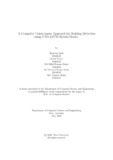A computer vision based approach for stalking detection using CNN-LSTM hybrid model
Date
2022-05Publisher
Brac UniversityAuthor
Iqbal, ShahriarHasan, Murad
Faisal, Md Billal Hossain
Neloy, Md.Musnad Hossin
Kabir, Md. Tonmoy
Metadata
Show full item recordAbstract
The next level of revolution toward a better world could involve combining human
security with machine intelligence. In recent years, stalking in public areas has
become a pervasive issue, and women are disproportionately affected. In order
to solve the problem, we want to design a model that can identify public-space
stalking. There have been several study papers and publications written on the topic
of stalking. However, most of them relied on spatial co-occurrence for the detection
of suspicious actions and face recognition, which does not adequately address the
problem. Using a hybrid mix of CNN and LSTM, we explain in our study a model for
determining the presence of a stalker situation utilizing a dataset of video footage.
The proposed model was evaluated using two approaches: one using manual feature
extraction and the other using dynamic feature extraction. The manual feature
extraction approach was evaluated with three distinct machine learning classifiers
(SVM,KNN, and Random Forest), whereas the dynamic feature extraction method
was examined with two different CNN models (VGG16 and ResNet50) and a CNNLSTM
hybrid model. The CNN-LSTM hybrid model has the highest accuracy of any
of these models, at 89%. Experiment results indicate that the CNN-LSTM hybrid
model detects a stalking scenario with a spatio-temporal advantage and provides a
better classification result than other models.

